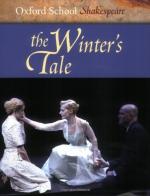|
This section contains 5,776 words (approx. 20 pages at 300 words per page) |

|
SOURCE: “Dualism and the Hope of Reunion in The Winter's Tale,” in Soundings, Vol. LXIX, No. 3, Fall, 1986, pp. 294-309.
In the following essay, Marshall argues that the statue scene in The Winter's Tale suggests a modification of orthodox Christian eschatology by denying the dualism of body and soul. Relating this scene to a sixteenth-century heresy known as mortalism—which held that both soul and body were dead until judgment day, when both would be resurrected—Marshall emphasizes the communal as well as the miraculous nature of Hermione's reanimation.
In Shakespeare's England, the doctrine of bodily resurrection was avidly proclaimed and enthusiastically credited. John Donne, for instance, wrote in 1627 of how one's arm could be “lost in Europe,” his leg “lost in Afrique or Asia, scores of yeers between,” yet when God “beckens for the bodies of his Saints … that body that was scattered over all the elements, is...
|
This section contains 5,776 words (approx. 20 pages at 300 words per page) |

|


